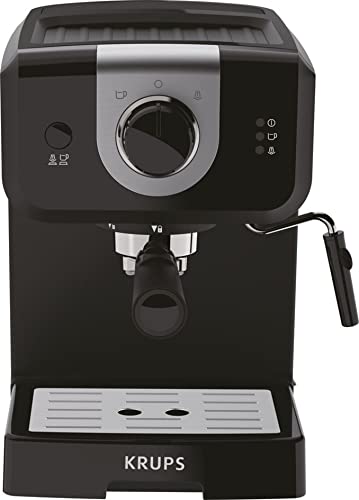How to Build a Professional Espresso Machine
For coffee shops and cafes seeking to attract customers with passion for espresso and barista skills this is a great option. It's the official machine for World Barista Championships and it really shows.
The barista can refill the water reservoir during their shift. The machine also comes with steam wands with cool-touch technology and hot water taps for tea.
Water

A commercial espresso machine has to be able to make a huge amount of espresso-based drinks in a timely manner. They are typically made of stainless steel, which is tough and resistant to breakages and scratches. Espresso machines made of stainless steel make it easier to maintain and clean.
Lastly, a good quality machine will have a separate shut off valve for the water line to prevent the buildup of limescale. This will ensure any repairs are restricted to the affected parts of the machine, and will not affect the rest of your operation.
Test your water and make sure it is being treated correctly. You can remineralize distilled water by adding a few minerals. It can improve the taste and lessen its erosive qualities, but can also harm certain machines. This is because the remineralized water will cause the boiler sensor to believe that the machine is full when it's not. This can lead to overheating and damage the machine.
Grinder
The grinder is an essential element in an espresso machine that works. The grinder turns the unground, raw coffee bean into a finely-ground coffee that can be tamped properly into the filter basket to ensure an outstanding extraction.
Professional commercial grade machines include grinders that can be programmed to accommodate different sizes of drinks. This guarantees consistency in results each time. Super-automatic machines go further and automatize the entire process from brewing, to grinding and dispensing. These machines are often praised during Lab tests for being easy to use.
A manual or semi-automatic espresso machine requires more involvement from the barista, however the quality of the final result is often worth the effort. This model earned the 2022 Good Housekeeping Coffee Award for its clever dosing feature that weighs and dispensing the right amount of ground coffee each time. It also comes with a low-pressure pre-infusion system to ensure well-balanced extraction as well as the milk frothing tool that did well in our tests for producing rich, thick steaming milk.
Temperature
When it is time to make espresso temperature, it plays an important impact on the flavor and quality of your coffee. If the water isn't operating at an optimal temperature, it could slow the extraction process and result in the coffee being bitter.
Espresso machines that are of high-quality come with tools that help you maintain the right temperature of your water. A PID monitors and regulates the temperature of the water. Double boiler systems are another method to do this. This lets you use a single boiler to tea and steam while the second one heats water to brewing temperatures.
Carles explains how these systems can make a difference for large companies as well as home-based baristas. They can make it much easier for newbies to dial in the perfect shot of espresso because they are able to maintain an exact temperature and eliminate all the variables that can throw off the flavor profile. It can also make it easier for experienced baristas to create their shots exactly the way they would like them.
Pressure
The pressure the espresso machine makes use of also affects the quality of the coffee it produces. Many espresso drinkers notice that their coffees taste different based on the amount of pressure they use, even if all other variables remain the same.
In general, most commercial-grade machines utilize nine bars of pressure to brew espresso. These machines are also more likely to be steam-driven instead of pumps-driven. Although higher-pressure machines are also available, they require a group head that is more complicated to handle the increased levels of pressure.
While you may see espresso machines that advertise 15 or even 18 bars of pressure, nine bars are generally regarded as the most reliable standard for producing consistently great brews. These machines with higher pressure tend to be more affordable and designed for home use.
In comparison, 9 bar of pressure is four times higher than the pressure exerted by your car tire. The greater the pressure that a professional espresso machine is able to apply, the better it will be at removing the flavor from your favorite coffee beans. It is worth investing in top-quality machines that can produce the best results.
Barista Skills
A barista should be able take orders and process them quickly and precisely. This is particularly important during busy times in the coffee shop. Being espresso coffee machines for sale to provide excellent customer service is also vital to establishing relationships with customers and increasing sales for the shop. This could include recognizing regular customers, working efficiently to resolve problems and remaining friendly and positive in difficult situations.
A strong ability to multitask is usually required for baristas as they may be required to take orders, operate the cash register and also communicate orders to their coworkers and take phone calls at the same time. This skill allows them to keep orders moving quickly to the customer and ensures that customers have an enjoyable experience at the coffee shop.
It is helpful for a barista to have knowledge of the different styles of drinks that can be prepared by an espresso machine. This can be mastered by researching the different types of coffee, attempting them out in person, or watching videos on the internet. Many baristas find it beneficial to attend classes on the topic, which are offered by several organizations.
